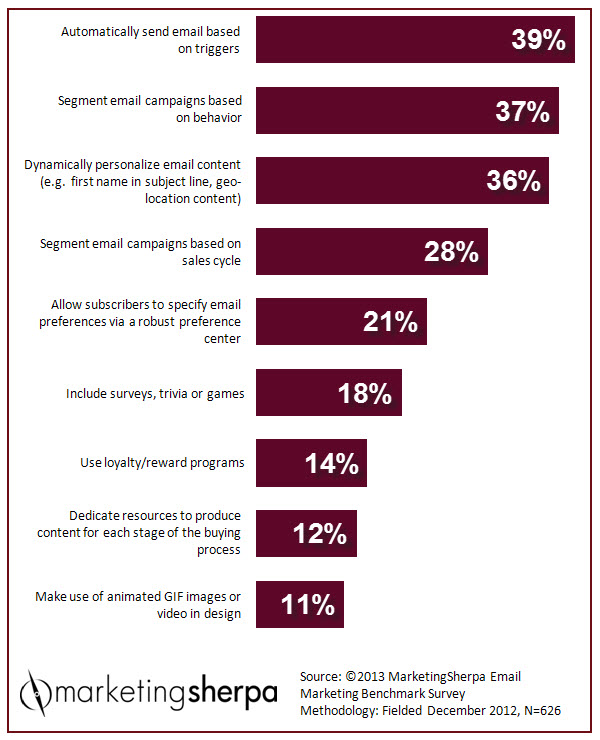Email Marketing: Segmentation, integration, automation and personal interaction
“Hey, look at me!” While strolling down the Las Vegas Strip during Email Summit 2013, I couldn’t help but notice all of the flashy signs, and individuals, trying to get my attention.
The challenge is equally difficult (although hopefully less gaudy) in the modern inbox, so in the MarketingSherpa 2013 Email Marketing Benchmark Report, we asked …
Q: Which of the following tactics is your organization using to improve the relevance and engagement of email content delivered to subscribers?
We asked your peers how they could use this data …
Segment email campaigns based on sales cycle
Stage-based marketing is the future. Breaking your marketing down to map to a consumer’s research cycle means understanding they will do research in multiple sessions, and at each session, be looking for different content. Best practice will suggest that you will need to engage with them in two or more different sessions, so you will need two or more stages.
Content needs to be short and targeted. Having a single large document is no longer best practice. Content should be targeted to each stage of the research cycle, and be easily consumed in under five pages.
– Mathew Sweezey, Marketing Evangelist, ExactTarget
How closely integrated are your sales and marketing departments?
I would have loved to see another question asked: How closely integrated are your sales and marketing departments? From my experience, those using segmentation and trigger-based emails are those who make sure that marketing and sales are closely aligned. A lot of the triggers “look” like they come from the sales team based on Web behavior with the ultimate objective to drive conversion, of course.
– April Wilson, Director of Analytic Products, RevSpring









